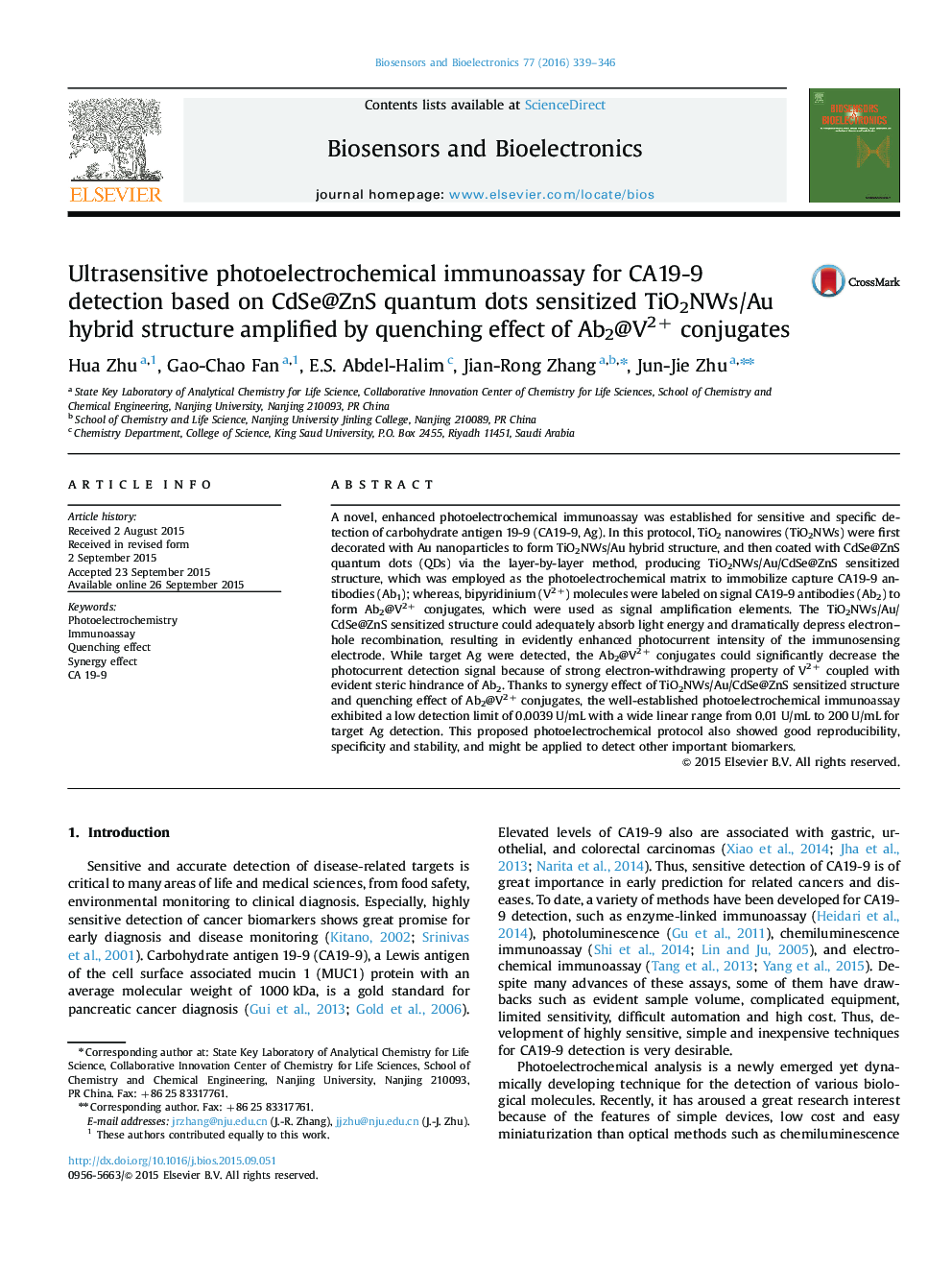| Article ID | Journal | Published Year | Pages | File Type |
|---|---|---|---|---|
| 7231430 | Biosensors and Bioelectronics | 2016 | 8 Pages |
Abstract
A novel, enhanced photoelectrochemical immunoassay was established for sensitive and specific detection of carbohydrate antigen 19-9 (CA19-9, Ag). In this protocol, TiO2 nanowires (TiO2NWs) were first decorated with Au nanoparticles to form TiO2NWs/Au hybrid structure, and then coated with CdSe@ZnS quantum dots (QDs) via the layer-by-layer method, producing TiO2NWs/Au/CdSe@ZnS sensitized structure, which was employed as the photoelectrochemical matrix to immobilize capture CA19-9 antibodies (Ab1); whereas, bipyridinium (V2+) molecules were labeled on signal CA19-9 antibodies (Ab2) to form Ab2@V2+ conjugates, which were used as signal amplification elements. The TiO2NWs/Au/CdSe@ZnS sensitized structure could adequately absorb light energy and dramatically depress electron-hole recombination, resulting in evidently enhanced photocurrent intensity of the immunosensing electrode. While target Ag were detected, the Ab2@V2+ conjugates could significantly decrease the photocurrent detection signal because of strong electron-withdrawing property of V2+ coupled with evident steric hindrance of Ab2. Thanks to synergy effect of TiO2NWs/Au/CdSe@ZnS sensitized structure and quenching effect of Ab2@V2+ conjugates, the well-established photoelectrochemical immunoassay exhibited a low detection limit of 0.0039Â U/mL with a wide linear range from 0.01Â U/mL to 200Â U/mL for target Ag detection. This proposed photoelectrochemical protocol also showed good reproducibility, specificity and stability, and might be applied to detect other important biomarkers.
Related Topics
Physical Sciences and Engineering
Chemistry
Analytical Chemistry
Authors
Hua Zhu, Gao-Chao Fan, E.S. Abdel-Halim, Jian-Rong Zhang, Jun-Jie Zhu,
